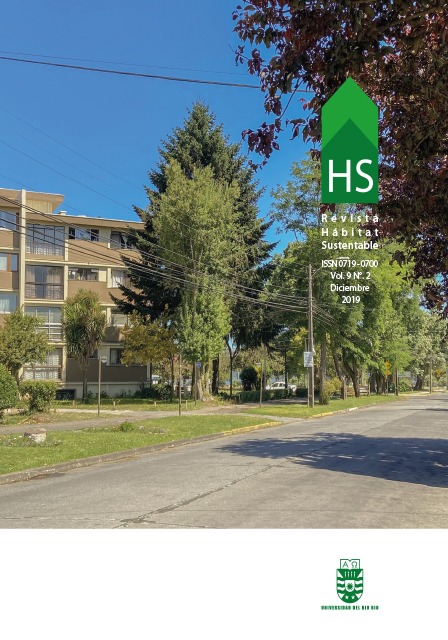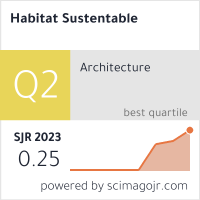Habitar en una zona de sacrificio: Análisis multiescalar de la comuna de Puchuncaví
DOI:
https://doi.org/10.22320/07190700.2019.09.02.01Palabras clave:
contaminación ambiental, planificación territorial, identidad comunitaria, zona de sacrificioResumen
El presente artículo expone los impactos que el desarrollo del Complejo Industrial Ventanas (CIV) ha tenido en la comunidad de Puchuncaví, entendiendo este como origen y causa de la crisis socioambiental de la denominada “Zona de Sacrificio”. A partir de autores como Lefebvre (2013) y Augé (1993) y sus planteamientos sobre la coproducción del espacio y el no lugar, se realiza un análisis multiescalar que persigue sentar las bases para la discusión y argumentación de una planificación basada en la comunidad y sus experiencias. Consecutivamente, se propone una metodología consistente en un taller participativo con miembros de la comunidad, cuyo objetivo es identificar, reconocer y caracterizar tanto el habitar en esta zona, como también los impactos que el desarrollo industrial ha tenido en el territorio. En definitiva, se observa que los actuales Instrumentos de Planificación Territorial perpetúan las lógicas de reproducción de la Zona de Sacrificio, impactando negativamente en la identidad territorial de la población de Puchuncaví, identidad que es validada por la comunidad. Finalmente, se abre la discusión sobre la necesidad de nuevas racionalidades que impliquen la revaloración del territorio, y su consiguiente reapropiación, como lógicas catalizadoras de propuestas productivas divergentes a la que hoy se encuentra materializada en el CIV.
Descargas
Citas
Ares, P. y Risler, J. (2013). Manual de mapeo colectivo: recursos cartográficos críticos para procesos territoriales de creación colaborativa. Buenos Aires: Tinta Limón. Recuperado de https://geoactivismo.org/wp-content/uploads/2015/11/Manual_de_mapeo_2013.pdf
Augé, M. (1993). Los “no lugares”. Espacios del anonimato. Una antropología de la sobremodernidad. Barcelona: Gedisa editorial.
Bachelet, M. (2014). Presidenta de la República, Michelle Bachelet: Si a la Universidad de Chile le va bien, al país le va bien. Recuperado de http://www.uchile.cl/noticias/102234/pdta-bachelet-si-a-la-u-de-chile-le-va-bien-alpais-le-va-bien
Badal, L. (2014). Valoración de pérdidas económicas generadas por la degradación de las tierras. Valle de Puchuncaví, Región de Valparaíso, Chile. Tesis de Pregrado. Universidad de Chile, Santiago, Chile. Recuperado de http://repositorio.uchile.cl/handle/2250/147799
Biblioteca Congreso Nacional (2017). Reportes Estadísticos Regionales 2017. Indicadores demográficos Comuna Puchuncaví. Recuperado de http://reportescomunales.bcn.cl/2017/index.php/Puchuncav%C3%AD/Poblaci%C3%B3n
Bolados, P. (2016). Conflictos socio-ambientales/territoriales y el surgimiento de identidades post neoliberales (Valparaíso-Chile). Izquierdas, (31), 102-129.
Carruthers, D. (2001). Environmental politics in Chile: Legacies of dictatorship and democracy. Third World Quarterly, 22(3), 343-358.
Chile Sustentable (2018). Cartilla Impactos de las Termoeléctricas a Carbón en la Salud de la Población Local | Contaminación | Infarto agudo de miocardio. Recuperado de https://www.scribd.com/document/389070940/Cartilla-Impactos-de-las-Termoelectricas-a-Carbon-en-la-Salud-de-la-Poblacion-Local
Espinoza, L. (2015). El polo industrial Quintero-Ventanas ¿Hacia dónde fue el desarrollo? MILLCAYAC – Revista Digital de Ciencias Sociales, II(3), 245-269.
González, I., Muena, V., Cisternas, M. y Neaman, A. (2008). Acumulación de cobre en una comunidad vegetal afectada por contaminación minera en el valle de Puchuncaví, Chile central. Revista Chilena de Historia Natural, 81(2), 279-291.
Gudynas, E. (2004). Ecología, Economía y Ética del Desarrollo Sostenible. Montevideo: CLAES.
Harvey, D. (1990). The Condition of Postmodernity: An Enquiry into the Origins of Cultural Change, Oxford: Blackwell Publishers.
Holifield, R. y Day, M. (2017). A framework for a critical physical geography of ‘sacrifice zones’: Physical landscapes and discursive spaces of frac sand mining in western Wisconsin. Geoforum, 85, 269-279.
Infante, P. (2016). (In)justicia ambiental en Chile y principales mecanismos para mitigar la inequidad: planificación territorial y derechos de comunidades vulnerables. Revista de Derecho Ambiental, IV(6), 143-163.
Instituto Nacional de Derechos Humanos (2018). Informe Misión de Observación Zona de Quintero y Puchuncaví. 11 al 13 de septiembre de 2018. Recuperado de: https://bibliotecadigital.indh.cl/bitstream/handle/123456789/1168/mision-quintero.pdf?sequence=1
Lindón, A. La ciudad y la vida urbana a través de los imaginarios urbanos, Revista Eure. 2007, vol. XXXIII, n° 99, pp. 7-16.
Lefebvre, H. (2013). La producción del espacio. Madrid: Editorial Capitán Swing.
Piñera, S. (2018). Presidente Piñera reafirma potencial agroalimentario de Chile en el Encuentro Nacional del Agro. Recuperado de HYPERLINK “https://prensa.presidencia.cl/discurso.aspx?id=85228”https://prensa.presidencia.cl/discurso.aspx?id=85228
Poblete, N., Macari, O. y Rodríguez, C. Enriquecimiento y distribución espacial de arsénico en los suelos de las comunas de Quintero y Puchuncaví. En XIV Congreso Geológico Chileno. La Serena: Chile, 2015, pp. 288-291.
Tellez, L., Name, L. y Veríssimo, C. Injusticia ambiental en un contexto industrial: el caso de villa hayes (Paraguay) como zona de sacrificio. En Encuentro de Geógrafos de América Latina, La Paz: Bolivia, 2017.
Salmani-Ghabeshi, S., Palomo, C., Bernalte, E., Rueda-Holgado, F., Miró, C., Cereceda-Balic, F., Fadic, X., Vidal, V., … y Pinilla-Gil, E. (2016). Spatial gradient of human health risk from exposure to trace elements and radioactive pollutants in soils at the Puchuncaví-Ventanas industrial complex, Chile. Environmental pollution, 218, 322-330.
Sánchez, J., Romieu, I., Ruiz, S., Pino, P. y Gutiérrez, M. (1999). Efectos agudos de las partículas respirables y del dióxido de azufre sobre la salud respiratoria en niños del área industrial de Puchuncaví, Chile. Revista Panamericana de Salud Pública, 6(6), 384-391.
Shade, L. (2015). Sustainable development or sacrifice zone? Politics below the surface in post-neoliberal Ecuador. The Extractive Industries and Society, 2(4), 775-784.
Svampa, M. y Viale, E. (2014). Maldesarrollo: La Argentina del extractivismo y el despojo. Buenos Aires: Katz Editores.
TERRAM, Fundación. INFOGRAFÍAS: Conoce las Zonas de Sacrificio ambiental del país – Fundación Terram. Recuperado de https://www.terram.cl/2016/02/infografias-conoce-las-zonas-de-sacrificio-ambiental-del-pais-2/
Descargas
Publicado
Cómo citar
Número
Sección
Licencia
El contenido de los artículos que se publican en cada número de Hábitat Sustentable, es responsabilidad exclusiva de los autores y no representan necesariamente el pensamiento ni comprometen la opinión de la Universidad del Bío-Bío.
Los autores/as conservarán sus derechos de autor y garantizarán a la revista el derecho de primera publicación de su obra, el cuál estará simultáneamente sujeto a la Licencia de Reconocimiento de Creative Commons CC BY-SA que permite a otros compartir-copiar, transformar o crear nuevo material a partir de esta obra con fines no comerciales, siempre y cuando se reconozcan la autoría y la primera publicación en esta revista, y sus nuevas creaciones estén bajo una licencia con los mismos términos.











 Programa de Información Científica/Concurso Fondos de Publicación de Revistas Científicas 2018/ Proyecto Mejoramiento de Visibilidad de Revistas UBB (Código:FP180007)
Programa de Información Científica/Concurso Fondos de Publicación de Revistas Científicas 2018/ Proyecto Mejoramiento de Visibilidad de Revistas UBB (Código:FP180007) 





